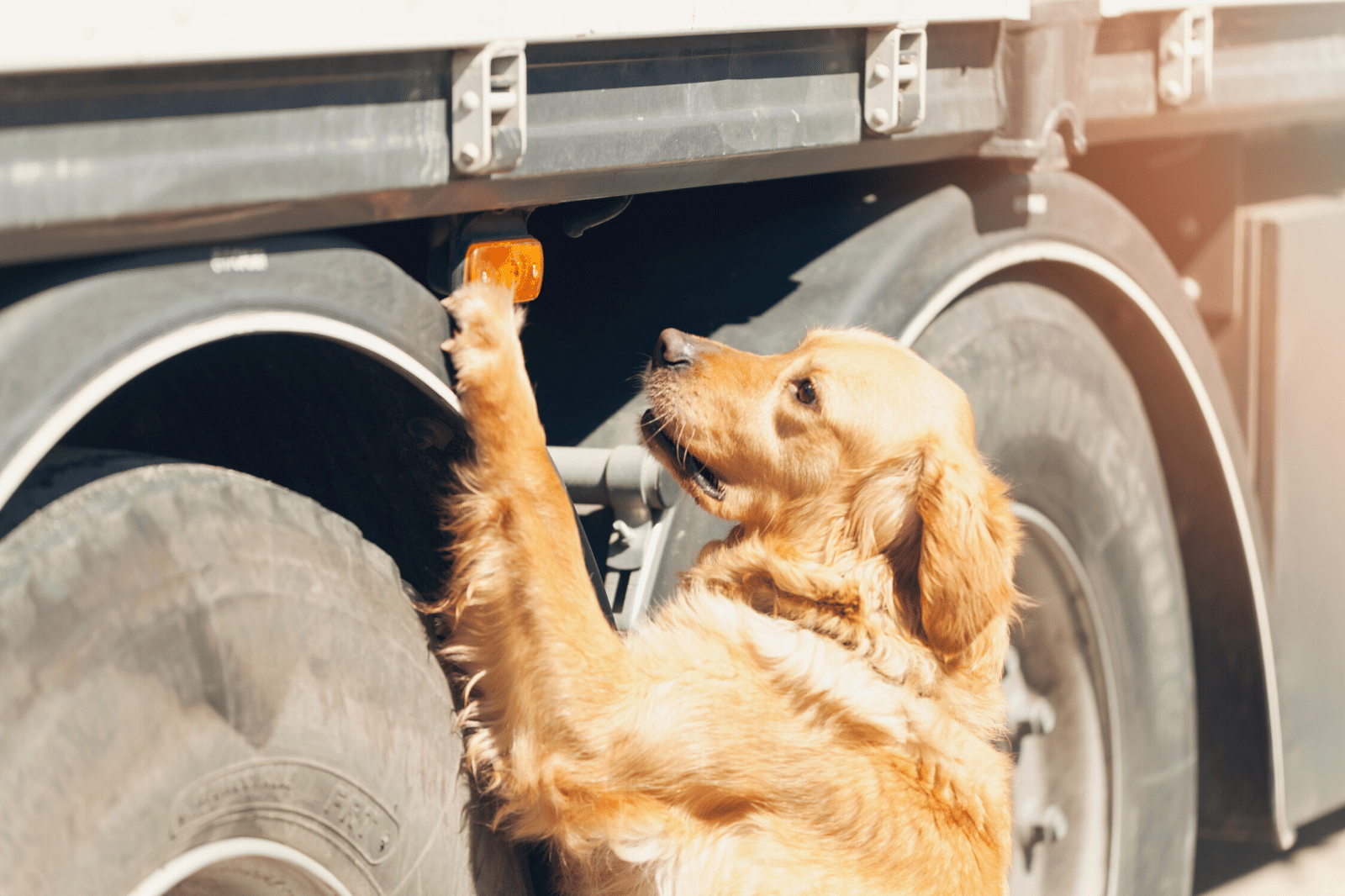Published March 22, 2022
Author: Harleen Bhalla, ISCBC youth volunteer
Dogs play an important role in keeping BC free of invasive mussels by detecting invasive mussels and stopping their spread into our local freshwater systems.
While transporting a watercraft in BC, it is mandatory to stop and report at all watercraft inspection stations along your travel routes. These stations, which are typically located near BC’s borders, are operated by the BC Conservation Officer Service’s (COS) Invasive Mussel Defence Program (IMDP). The watercraft inspection program is there to detect and respond to high-risk watercraft potentially transporting invasive Zebra and Quagga mussels into BC from infested waterways. At the stations, a team of Aquatic Invasive Species (AIS) inspectors will inspect and determine if the watercraft needs to be decontaminated. Helping these officers is the COS’s AIS K9 unit. These multipurpose detection dogs are trained to detect mussels as well as firearms, ammunition, wildlife parts and human scent.
If introduced into BC, Zebra and Quagga mussels would have serious environmental, economic and social impacts to the province. However, with the addition of the K9 unit, which started in 2017, the province has added another layer of protection from these invaders entering BC’s waters. Currently there are two dogs in the program – Kilo and Major.

How do they do it?
The dogs are trained to detect the odour of the invasive mussels and pinpoint their exact location. If they detect mussels, they will display a behaviour that alerts their handlers, and a visual inspection of that location will be performed. In addition, the handlers are trained to watch for small changes in the dog’s behaviour. This allows them to effectively guide the dogs around the watercraft during the inspection, so nothing is missed. Inspecting watercraft with the dog’s help allows for easier detection in areas that may be more difficult to visually inspect.
I was able to ask Sgt. Cynthia Mann, who worked with Major, a few questions I had on the program. Here is what I asked.
How are the dogs trained to recognize the specific odour from the mussels?
To detect the mussels, they are scent imprinted using a Kong as a reward. To do this they are first trained, and rewarded, to find little pieces of Kong. Once they are proficient with locating the Kong pieces, a scent is added to the Kong. So, for mussel detection, the scent of the mussels is added. Then once this step has consistent detection, the pieces of Kong are removed, and the dog is rewarded for locating the mussel’s scent.
How much time does it take to fully scent imprint the dogs?
For Major, it took him approximately four months. He started the process when he was seven months old and was fully scent imprinted to the point where we could be confident in his detection when he was eleven months old. Each dog is an individual though so the time each one needs to be fully imprinted may vary.
How has the introduction of the dogs changed or improved the watercraft inspection process?
Because they aren’t inspecting visually, they can respond to and detect things that we can’t see. For example, the bilge of a watercraft is difficult to visually inspect. However, the dogs being able to search using scent allows for them to easily inspect it for the presence of mussels. They are another tool we can use to help protect the province from the mussels.
Why should I care?
Zebra and Quagga mussels are a threat to our freshwater systems for several reasons:
- They will impact the economic security of BC’s industrial and commercial businesses by interfering with municipal water supplies, agricultural irrigation, water treatment, fisheries and hydropower operations by blocking water intakes and other infrastructure.
- They are hazards for ecosystems because they affect aquatic food webs, which can harm native species, such as sockeye salmon.
- Once they have been introduced into a system, they are basically impossible to eradicate.
Are you helping these K9 protectors by doing your part and practicing Clean Drain Dry? Learn more about how you can prevent the spread of invasive species with Clean Drain Dry!
Author Bio
Harleen Bhalla is a new immigrant to Canada and a volunteer with the Invasive Species Council of BC. Her desire to contribute her efforts toward nature conservation is her way of achieving happiness. She loves to make every day worth living through being connected with nature.
Share





